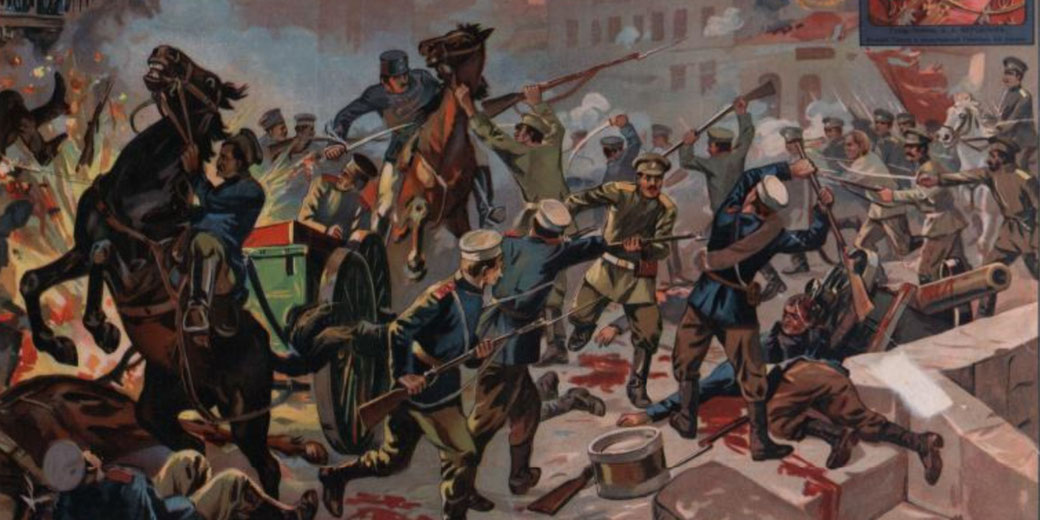The Brusilov Offensive: Russia's bold gamble in World War I

The Brusilov Offensive, named after the Russian General Alexei Brusilov, was unleashed on the Eastern Front from June to September 1916.
It was designed to demonstrate the Russian Empire's military prowess against the Central Powers, primarily Austria-Hungary and Germany.
The offensive was a daring gamble, a strategic masterstroke, that aimed to relieve pressure on Russia's allies in the west and south.
But a greater concern was the fact that the Russian Empire was grappling with dangerous internal unrest.
Russia's dangerous position in 1916
In the early months of 1916, the Eastern Front of World War I was a volatile theater of conflict.
The Russian Empire had managed to hold its ground against the Central Powers, but the Russian military was stretched thin.
It was grappling with ongoing logistical issues and a lack of modern weaponry.
In addition, the morale of the Russian troops was also wavering due to the harsh conditions of the front and the socio-political unrest brewing back home.
General Alexei Brusilov, who was a seasoned Russian commander known for his innovative tactics, was appointed to lead the Southwestern Front.
On the other side, the Central Powers, though having achieved some significant victories, were also facing their own set of challenges.
The strain of maintaining a two-front war was beginning to show. The Austro-Hungarian forces, in particular, were struggling to keep up with the demands of the conflict.
As a result, the Eastern Front was a critical area of concern for them. They were aware that the threat of a major Russian offensive was a real possibility.
How the Brusilov Offensive was intended to work
Recognizing the limitations of the Russian army, including a lack of modern weaponry and logistical issues, Brusilov devised a strategy that aimed to maximize the strengths of his forces while attempting to exploit the weaknesses of the enemy.
First, the offensive was planned along a 300-mile front, stretching from the Pripet Marshes to the Romanian border.
This broad front strategy was designed to prevent the enemy from easily transferring reserves to the most threatened sectors.
In addition, Brusilov also planned to use shock troops: small, highly trained units tasked with breaking through enemy lines.
This was a tactic that was relatively new at the time.
Not to be forgotten, the Russian artillery was to play a crucial role in the offensive.
Instead of a simply providing the traditional prolonged bombardment, which always gave the enemy time to reinforce their defenses, Brusilov opted for a short, intense artillery barrage.
This was to be immediately followed by an infantry assault.
This was intended to catch the enemy off guard and create gaps in their defenses for the shock troops to exploit.
Interestingly, the Central Powers, particularly Austria-Hungary, were fully anticipating the Russian attack.
However, they were uncertain about where the main blow would fall.
General Conrad von Hötzendorf, the Austro-Hungarian Chief of Staff, had spread his forces thinly along the front, leaving them vulnerable to a concentrated attack.
The attack begins
The Brusilov Offensive was finally launched on June 4, 1916. As planned, it was started with a ferocious artillery barrage that specifically targeted the Austro-Hungarian lines.
This was quickly followed by the infantry assault led by the shock troops.
Much to Brusilov's delight, the initial attack was a resounding success. The Austro-Hungarian forces, caught off guard by the intensity and scale of the offensive, were unable to mount an effective resistance.
Over the next few days, the Russian forces continued to make significant gains. By June 8, they had captured the city of Lutsk and taken over 200,000 Austro-Hungarian prisoners.
However, the Russian forces were starting to be stretched thin. Once more, logistical issues, particularly a lack of ammunition and supplies, began to hamper their progress.
Moreover, the other Russian armies, which were supposed to launch simultaneous offensives to divert the enemy's attention, were slow to act.
As a result, it allowed the Central Powers to transfer their reserves to the Southwestern Front.
Regardless, the Brusilov Offensive continued for several months.
By the time the offensive was called off in September 1916, they had pushed the Austro-Hungarian forces back over 60 miles and inflicted heavy casualties.
What impact did the Brusilov Offensive have on WWI?
For the Russian Empire, the offensive was a significant military success. They had inflicted heavy casualties on Austria-Hungary and made substantial territorial gains.
The offensive had also resulted in boosted morale for the Russian troops, and even the public back home.
However, the victory came at a high price. The Russian forces suffered heavy casualties, with estimates ranging from half a million to a million soldiers.
Most crucially, the offensive failed to achieve its strategic ultimate objective of forcing Germany to divert significant forces from the Western Front to the East.
For the Central Powers, the offensive also strained the relationship between Austria-Hungary and Germany, with the former increasingly dependent on the latter for military support.
The most important lessons learnt from the attack
The Brusilov Offensive became an important testing ground for the use of shock. They proved highly effective in disrupting the enemy's defenses and facilitating breakthroughs.
The success of these tactics in the Brusilov Offensive influenced the future military planning on the western front.
The Germans would begin to adopt these strategies with great effect in 1918.
What do you need help with?
Download ready-to-use digital learning resources
Copyright © History Skills 2014-2025.
Contact via email
With the exception of links to external sites, some historical sources and extracts from specific publications, all content on this website is copyrighted by History Skills. This content may not be copied, republished or redistributed without written permission from the website creator. Please use the Contact page to obtain relevant permission.





